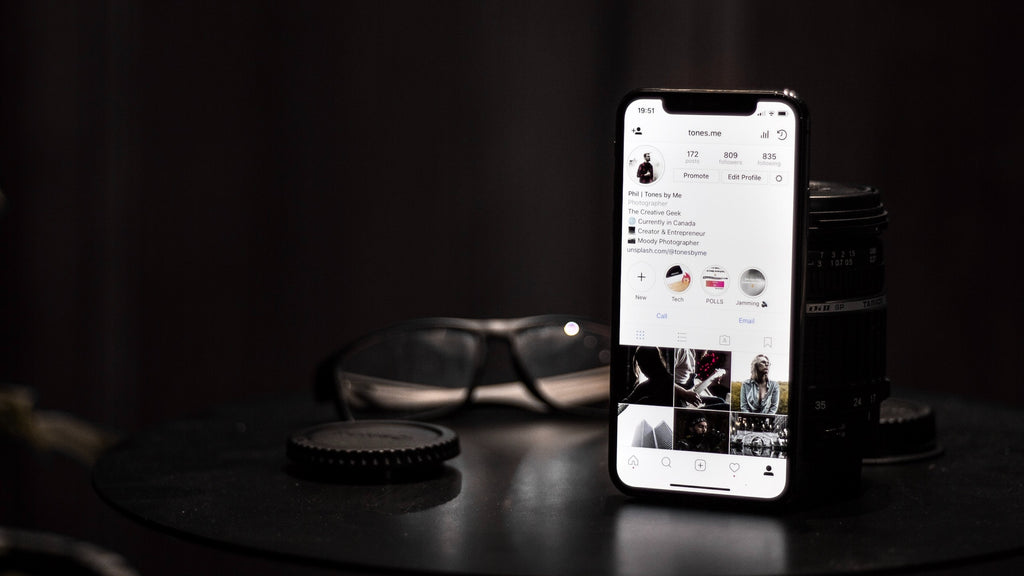What Happens When You Put Your SIM Card in Another Phone?
Table of Contents
- Understanding the Basics of SIM Cards
- The Thrilling Adventure of Switching SIM Cards
- The Art of Switching SIM Cards
- What Will Happen? It Depends!
- Possible Issues and How to Tackle Them
- Data and Contacts Transfer - The Heart of the Matter
- Data and Contacts – Your Digital Soul
- Contacts Transfer
- Data Transfer
- But What About Voicemail and Messaging Apps?
- Security and Privacy Concerns
- FAQs
Greetings, fellow travelers and tech enthusiasts! In this digital age, where our smartphones have become an extension of ourselves, it's not uncommon to wonder what would happen if we were to, say, put our trusty SIM card into another phone. Would our world crumble, or would it be business as usual? Fear not, because we're about to dive headfirst into this SIM card saga.
Understanding the Basics of SIM Cards
The Tiny Card with a Mighty Role
To kick things off, let's get acquainted with our star of the show - the SIM card. SIM, which stands for Subscriber Identity Module, is a tiny chip that plays a monumental role in connecting your phone to your cellular network. It's essentially the golden ticket that grants your device access to the world of texts, calls, and data.
Now, not all SIM cards are created equal. You might have heard of the different sizes: standard, micro, and nano. They're like SIM card fashion trends – they change with time. It's essential to know which one your phone requires, as inserting the wrong size could lead to a potentially frustrating fashion faux pas.
Mastering Compatibility and Sizes
Here's where it gets interesting. Your phone has a SIM card slot, and it's like Goldilocks' quest for the perfect porridge – the SIM card must fit just right. If you've ever wondered why SIM cards come in different sizes, well, it's to cater to the diverse array of phones out there.
So, before you embark on the SIM card swap adventure, make sure to determine the correct size for your phone. This is where a little patience comes in handy. Some phones come with an ejector tool or a small pin to help you pop out the SIM card tray. Others require a bit of finesse, and if you're feeling brave, you can even trim your SIM card to size.
But a word of caution: If you're not confident in your DIY skills, it's better to consult a professional or your carrier to avoid any mishaps.
The Thrilling Adventure of Switching SIM Cards
Welcome back, intrepid readers! In our previous segment, we covered the basics of SIM cards, from their importance to understanding their various sizes. Now, it's time to journey deeper into the world of "What Happens When You Put Your SIM Card in Another Phone?"
The Art of Switching SIM Cards
Picture this: You have two smartphones, each tempting you with its unique features. One is perfect for gaming, and the other excels in photography. Naturally, you might think, "What if I could have the best of both worlds?" Enter the allure of switching SIM cards between phones.
But, as with any adventure, preparation is key. Let's break it down step by step:
-
Turn Off Both Phones: Before even thinking about swapping SIM cards, turn off both phones. It's like putting on your seatbelt before a rollercoaster ride – safety first!
-
Eject the SIM Tray: Use the handy-dandy SIM ejector tool or paperclip to gently pop out the SIM card tray from each phone. Take a moment to appreciate the engineering involved.
-
Swap SIM Cards: Carefully remove your SIM card from Phone A and place it in Phone B. Likewise, insert Phone B's SIM card into Phone A. Remember, gentle hands are your allies here.
-
Power Up: Now, power on both phones. You'll witness the magic as your new device connects to the network. It's like switching Hogwarts houses, but with more bars on your signal indicator.
What Will Happen? It Depends!
Now, the million-dollar question: What happens when you put your SIM card into another phone? The answer is as diverse as the smartphone market itself. The outcome depends on various factors, including:
1. Switching within the Same Carrier: If both phones are from the same carrier, you're likely to experience a smooth transition. Your new device should recognize the SIM card, and you'll be back in business in no time.
2. Moving to a Different Carrier's Device: Things can get a bit trickier if you're switching to a phone from a different carrier. The new phone might not recognize your SIM card, and you could find yourself in a signal-free desert.
3. Using an Unlocked Phone: If you're lucky enough to own an unlocked phone, you have more flexibility. Unlocked phones can work with SIM cards from various carriers, but there might still be some compatibility issues to contend with.
The Role of Compatibility and Network Bands
Now, let's talk about compatibility. Not all phones are created equal when it comes to the network frequencies they support. Different carriers use different bands to deliver their services, and if your phone isn't compatible, you might face issues.
It's like trying to speak a foreign language in a land where no one understands you. Your SIM card might be chirping away, but the phone simply won't listen.
Possible Issues and How to Tackle Them
While the majority of SIM card swaps go off without a hitch, there are potential roadblocks:
-
Network Lock: Some phones are locked to a specific carrier. If your phone is locked, your SIM card might not work in another phone unless it's unlocked. Contact your carrier to inquire about unlocking.
-
Carrier Restrictions: Certain carriers impose restrictions on using their SIM cards in different phones. Be aware of any carrier-specific limitations.
Data and Contacts Transfer - The Heart of the Matter
Greetings again, fellow adventurers! In our previous sections, we ventured into the realms of SIM cards and switching them between phones. Now, it's time to dive into a topic close to every smartphone user's heart - data and contacts transfer. After all, it's your digital life we're talking about.
Thanks for visiting our blog, are you planing to travel to the US? Check out our USA SIM card or our eSIM USA before you take off.
Data and Contacts – Your Digital Soul
Your smartphone isn't just a piece of hardware; it's a vessel for your digital identity. It holds your photos, messages, apps, and contacts – the virtual essence of your life. So, what happens to all this treasure when you put your SIM card into another phone?
Contacts Transfer
Contacts are the lifeblood of communication. Losing them can be a real heartache. Thankfully, transferring contacts is relatively straightforward:
-
Using Google or Apple Accounts: If you've synced your contacts to your Google (Android) or Apple (iOS) account, they'll automatically appear on your new device when you log in. It's like having your virtual little black book ready and waiting.
-
SIM Card Transfer: Some older phones have the option to save contacts directly to the SIM card. If that's the case, you can copy them to your new device's storage or sync them with your Google or Apple account.
-
Third-party Apps: Numerous apps specialize in contact transfers. Apps like "Copy My Data" or "Move to iOS" can help you seamlessly move your contacts from one device to another.
Data Transfer
Photos, messages, and apps are the heart and soul of your smartphone experience. To ensure a smooth transition, consider the following:
-
Photos and Videos: Before the switch, back up your photos and videos to a cloud service like Google Photos or iCloud. Once you log in on your new device, your media files will be readily available.
-
Messages and Chat Apps: Messages can be a bit trickier, especially if you're switching between Android and iOS. Use built-in backup features (like iCloud or Google Drive) or third-party apps to transfer messages. For chat apps like WhatsApp, they often have their backup and transfer options.
-
Apps: Most modern smartphones allow you to reinstall apps from your app store account. Simply log in, and your apps will be available for download. Keep in mind that some app data may not transfer unless the app itself offers a backup option.

But What About Voicemail and Messaging Apps?
Good question! When you put your SIM card into another phone, voicemail settings and messaging apps can be affected. Here's what to keep in mind:
-
Voicemail: Depending on your carrier and phone, you might need to reconfigure your voicemail settings. Check with your carrier for guidance.
-
Messaging Apps: Messaging apps like iMessage or WhatsApp may need to be configured to work correctly on your new device. Ensure you've logged in and verified your phone number for a smooth experience.
Security and Privacy Concerns
Ahoy there, savvy travelers of the digital realm! We've journeyed through the world of SIM cards, switching them between phones, and the intricacies of data and contact transfers. Now, it's time to tackle a matter of paramount importance – your security and privacy.
The Sword of Damocles: Security Risks
While the act of switching your SIM card may seem innocent enough, it's not without its potential security pitfalls. Let's raise the shields and examine the concerns:
1. Unauthorized Access: When you put your SIM card into another phone, you're essentially granting access to your cellular network. If someone gets hold of your SIM card, they can impersonate you, potentially causing mischief or unauthorized actions on your behalf.
2. Unlocked Phone Vulnerabilities: If your phone is unlocked, it's more susceptible to unauthorized use with another SIM card. Always keep your phone secured with a PIN, password, or biometric authentication.
3. Leaving Accounts Logged In: When transitioning to a new device, it's crucial to log out of all your accounts and apps on the old one. Leaving accounts active can expose sensitive information.
The Shield of Protection: How to Safeguard Your Privacy
Now that we've identified the dragons, it's time to arm ourselves with protective measures:
1. Lock Your Phone: Set a PIN, password, or biometric lock on your phone to prevent unauthorized access, even if the SIM card is swapped.
2. Log Out and Deauthorize Devices: Before switching devices, log out of all your accounts and apps on the old phone. Additionally, check if any accounts have device authorization settings and deauthorize the old device.
3. Enable Two-Factor Authentication (2FA): Enable 2FA wherever possible. This adds an extra layer of security, requiring a second verification step, like a code sent to your phone, when logging in.
4. Keep Software Updated: Regularly update your phone's operating system and apps to patch security vulnerabilities.
5. Use Secure Messaging: When dealing with sensitive information or messages, opt for end-to-end encrypted messaging apps like Signal or WhatsApp.
Before you take off make sure to check with local government of the travel status.
FAQs
Can I use any SIM card in any phone?
Not necessarily. SIM card compatibility depends on the phone's network compatibility and the SIM card size. Make sure they match to avoid issues.
Will I lose my data when switching SIM cards?
You may lose data if you haven't backed up your phone. It's essential to regularly back up your data to avoid any loss during the switch.
What happens if I insert a SIM card from a different carrier?
The new phone may not work with a different carrier's SIM card unless it's unlocked. You might need to contact the carrier for assistance in such cases.
Can I switch SIM cards between Android and iPhone?
Yes, you can, but ensure the SIM card fits the phone's slot. Be aware of potential issues with iMessage or FaceTime when switching between iOS and Android.
Why is my SIM card not working in the new phone?
Several factors could cause this issue, such as incompatible network bands, a locked phone, or carrier restrictions. Contact your carrier for help if needed.









